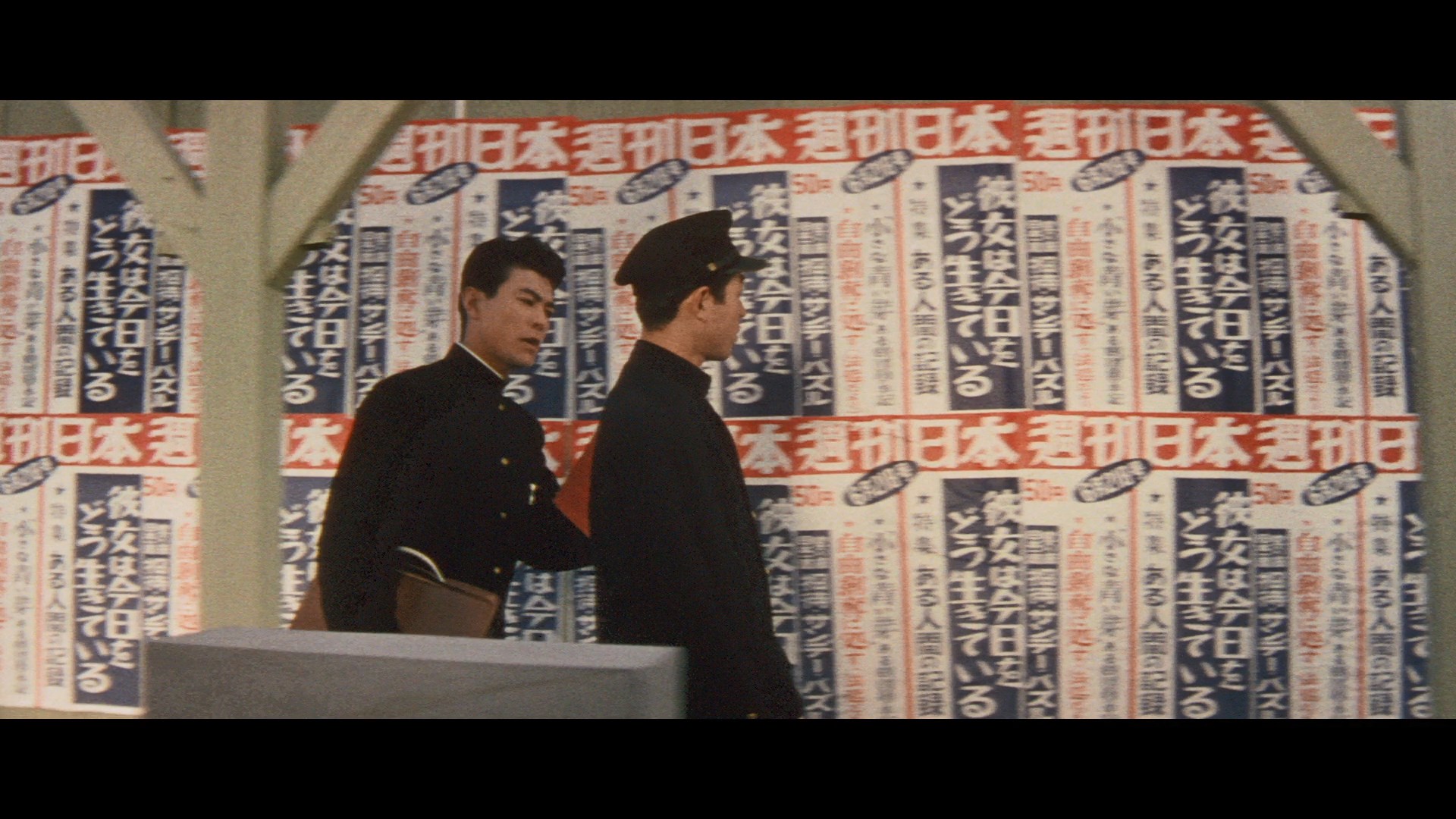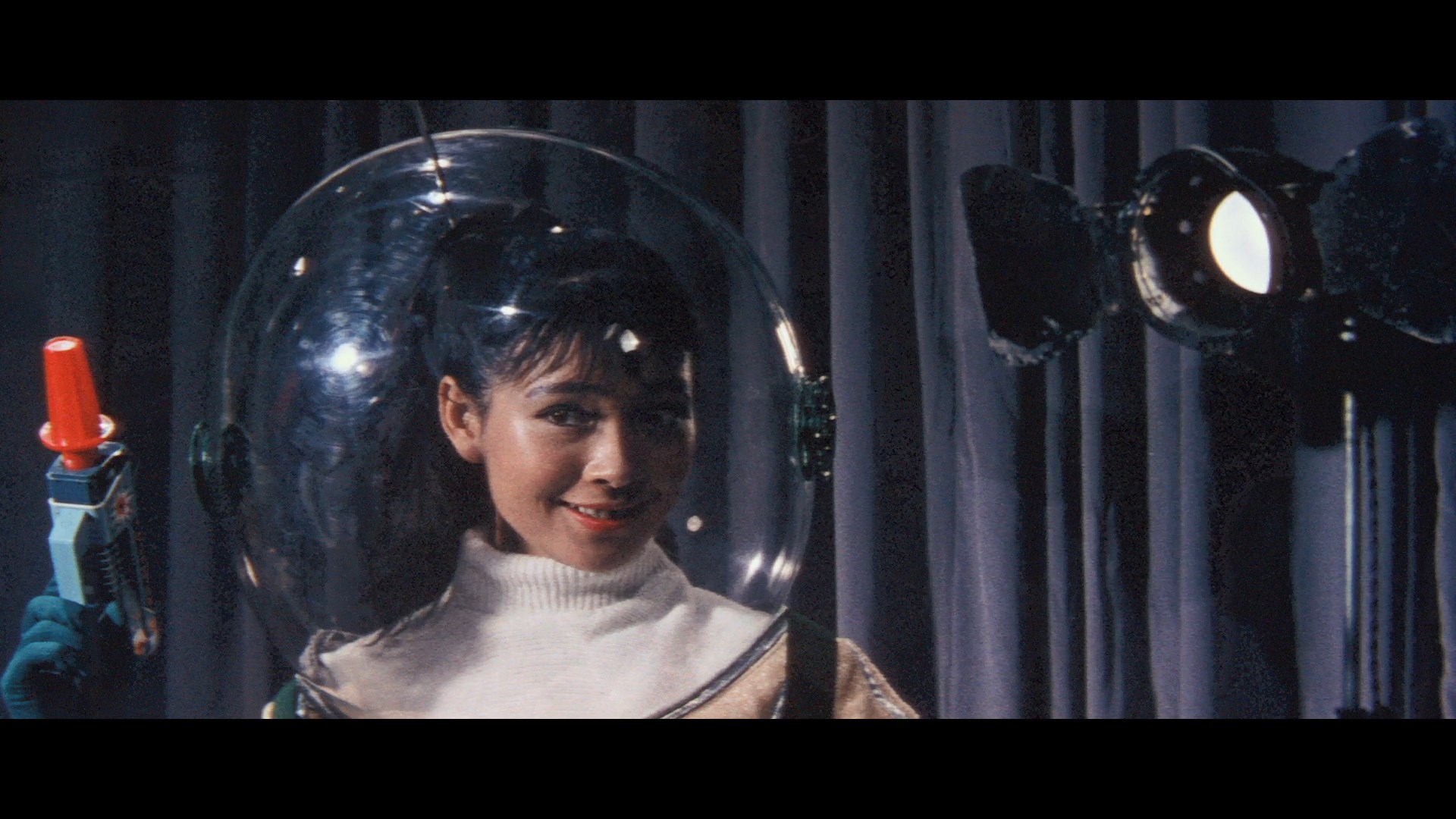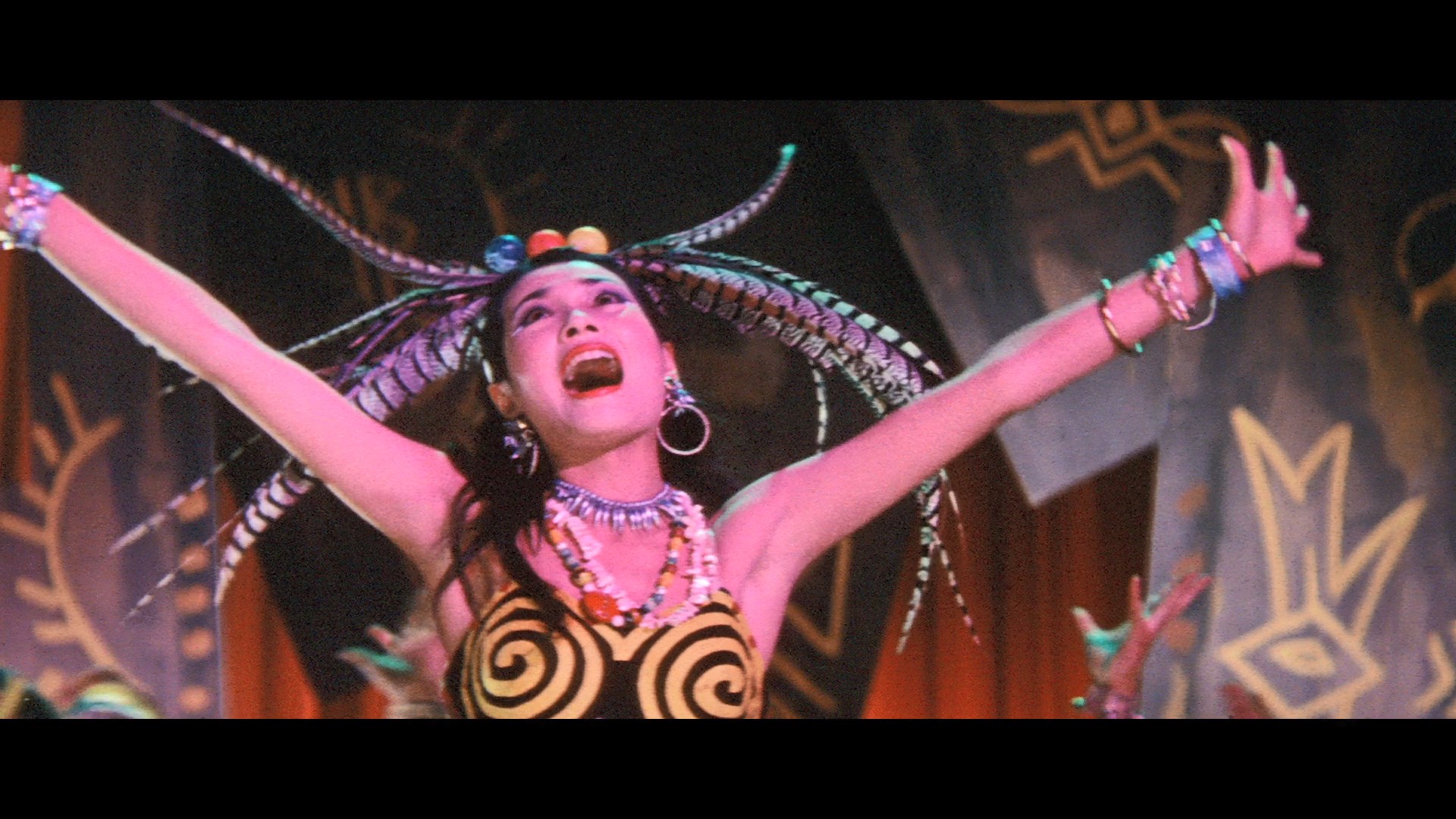

Color, 1958, 95 mins. 4 secs.
Directed by Yasuzô Masumura
Starring Hiroshi Kawaguchi, Hitomi Nozoe, Kinzo Shin, Yunosuke Ito, Hideo Takamatsu
Arrow Video (Blu-ray) (US/UK RA/RB HD), Fantoma (DVD) (US R1 NTSC) / WS (2.35:1) (16:9)
 them all as caramels," remarks one executive
them all as caramels," remarks one executive  about the crowds swarming at the bottom of his skyscraper during an early scene in the corporate satire Giants and Toys, the third film by the delirious Yasuzo Masumura and a giddy dry run for the fever pitch tone of his more mature works during the 1960s. Though the subject of competitive advertising during the international business boom of the '50s might not sound like prime material for cinematic entertainment, Masumura somehow keeps all of the story's elements bouncing in the air thanks to some kind of fiendish juggling act, resulting in a striking entertainment impossible to fully absorb in one viewing.
about the crowds swarming at the bottom of his skyscraper during an early scene in the corporate satire Giants and Toys, the third film by the delirious Yasuzo Masumura and a giddy dry run for the fever pitch tone of his more mature works during the 1960s. Though the subject of competitive advertising during the international business boom of the '50s might not sound like prime material for cinematic entertainment, Masumura somehow keeps all of the story's elements bouncing in the air thanks to some kind of fiendish juggling act, resulting in a striking entertainment impossible to fully absorb in one viewing.  more capable then Nishi
more capable then Nishi  could have imagined, as his entire world goes spinning out of control.
could have imagined, as his entire world goes spinning out of control. one way or the other. The DTS-HD MA Japanese mono track (with optional English subtitles) is also in good shape. In a new audio commentary by Irene
one way or the other. The DTS-HD MA Japanese mono track (with optional English subtitles) is also in good shape. In a new audio commentary by Irene  González-López, the film scholar takes an analytical look at the film focusing on its visual style, the cultural symbolism of its recurring images, the way it acclimates viewers to its comparatively extreme aesthetic approach, and the sly ways it approaches its male versus female characters. A lengthy video intro by Tony Rayns (10m26s) covers the history behind the film including the writing personnel involving in crafting the story, the prescient nature of the narrative that foreshadows reality TV and corporate-crazed culture, and the state of advertising at the time before TV became the dominant market by far. Asian cinema scholar Earl Jackson weighs in with the visual essay "In the Realm of the Publicists" (20m35s) continues that thread exploring the destructive aspects of corporate fealty, some key changes from Takeshi Kaikô's source novel, the ties to other Japanese films of the era tied to advertising and office culture that impacts the lives of individuals, and connections to other Masumura works. Also included are the subtitled Japanese trailer and a gallery of posters and stills, while the first pressing comes with an insert booklet featuring liner notes b y Michael Raine.
González-López, the film scholar takes an analytical look at the film focusing on its visual style, the cultural symbolism of its recurring images, the way it acclimates viewers to its comparatively extreme aesthetic approach, and the sly ways it approaches its male versus female characters. A lengthy video intro by Tony Rayns (10m26s) covers the history behind the film including the writing personnel involving in crafting the story, the prescient nature of the narrative that foreshadows reality TV and corporate-crazed culture, and the state of advertising at the time before TV became the dominant market by far. Asian cinema scholar Earl Jackson weighs in with the visual essay "In the Realm of the Publicists" (20m35s) continues that thread exploring the destructive aspects of corporate fealty, some key changes from Takeshi Kaikô's source novel, the ties to other Japanese films of the era tied to advertising and office culture that impacts the lives of individuals, and connections to other Masumura works. Also included are the subtitled Japanese trailer and a gallery of posters and stills, while the first pressing comes with an insert booklet featuring liner notes b y Michael Raine.
![]()